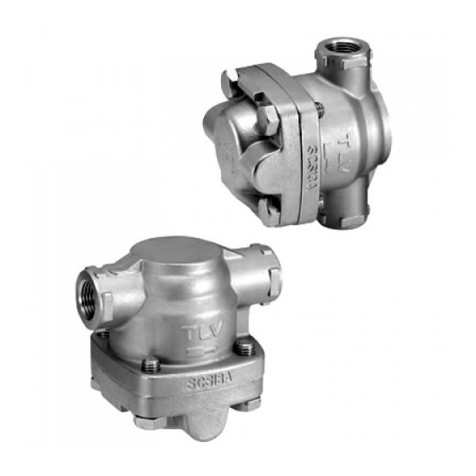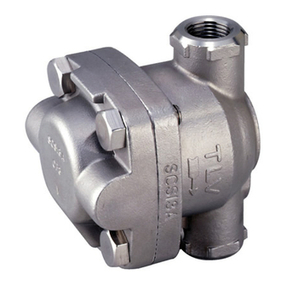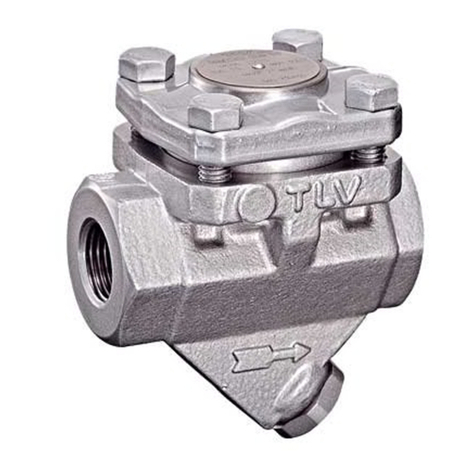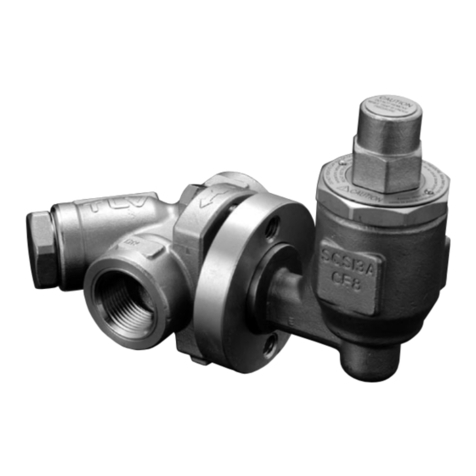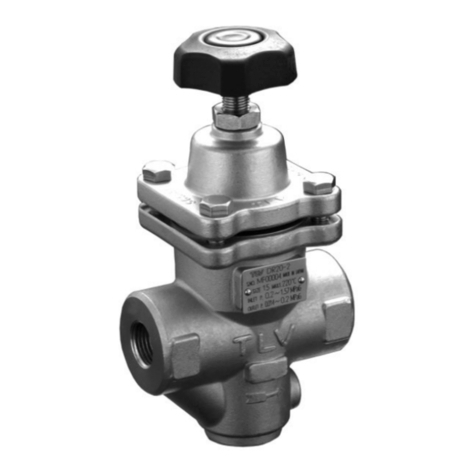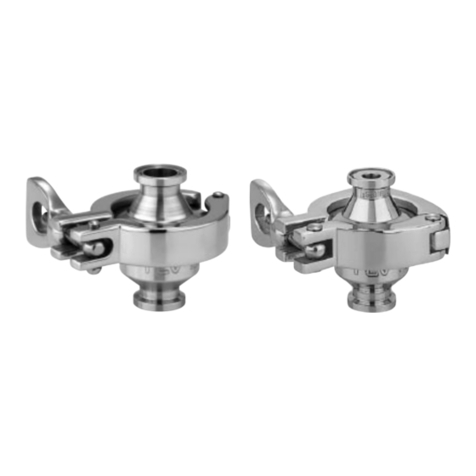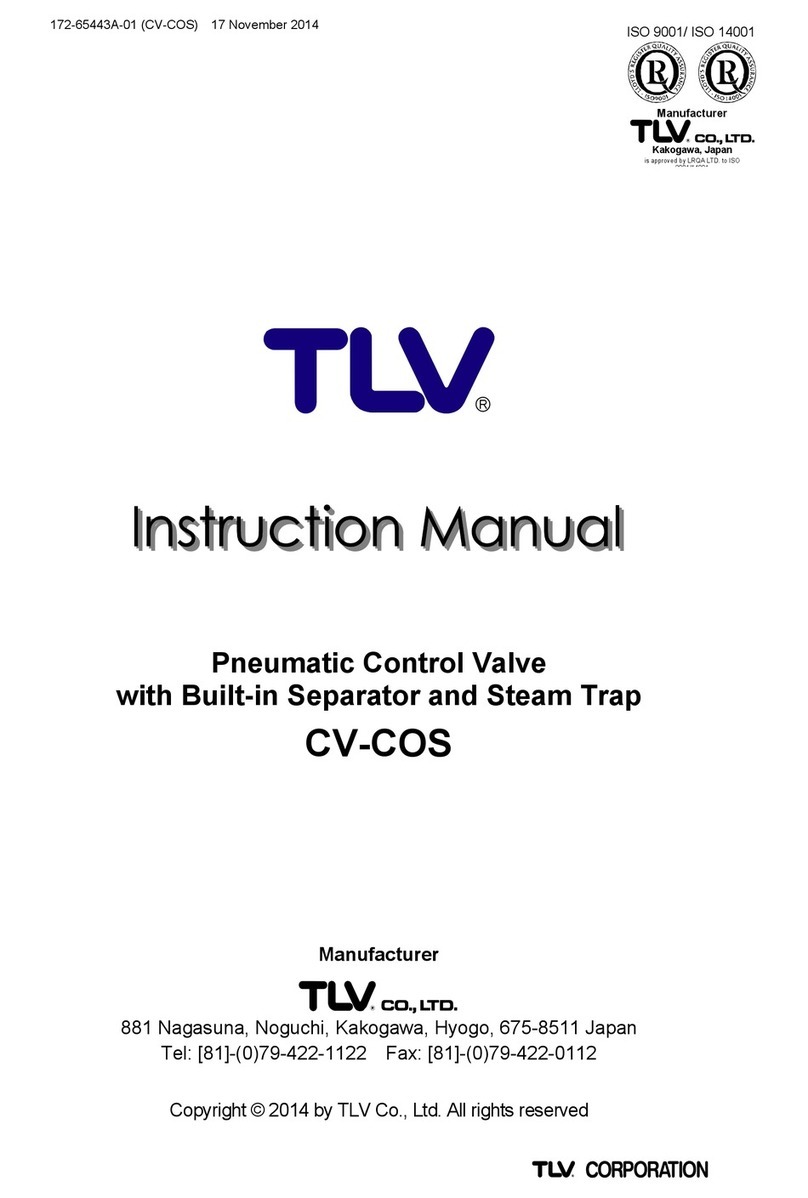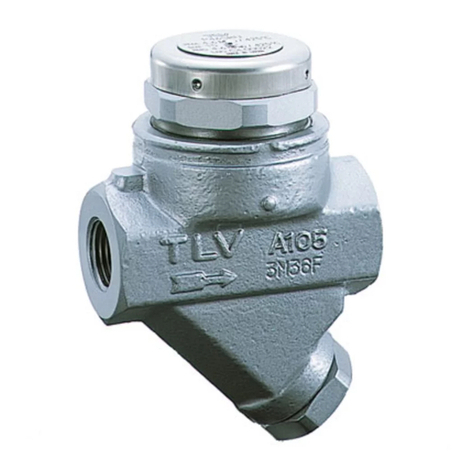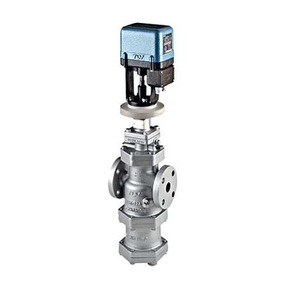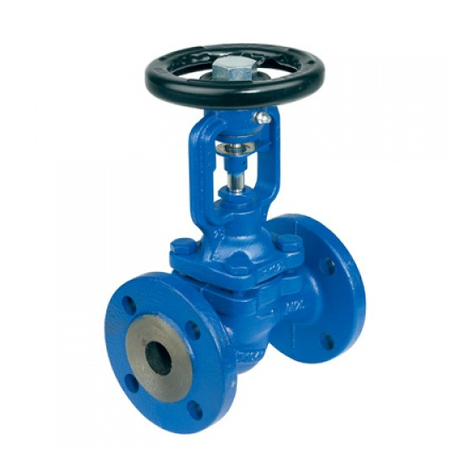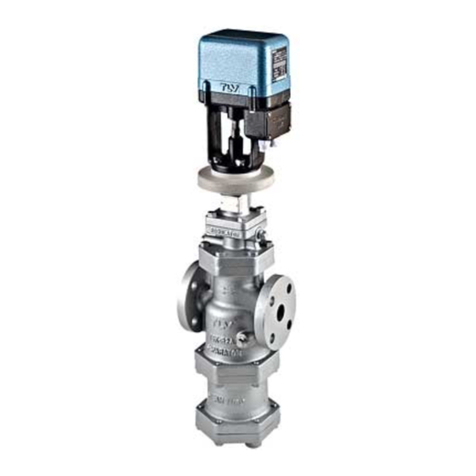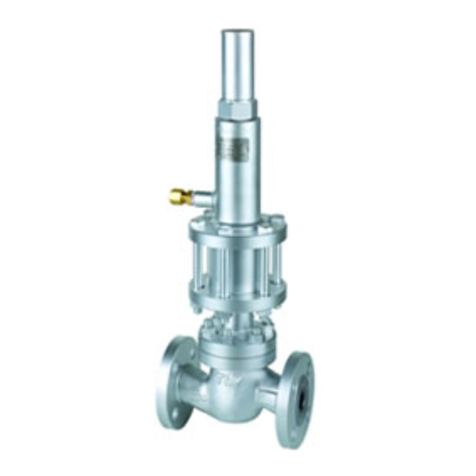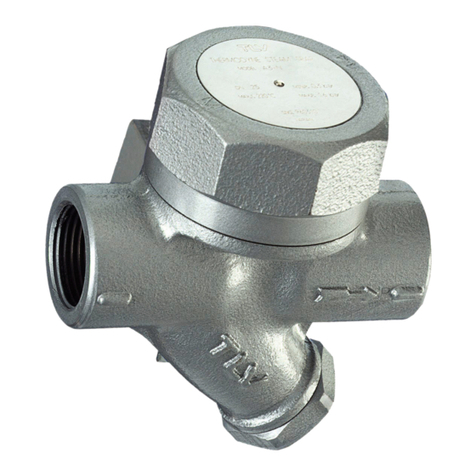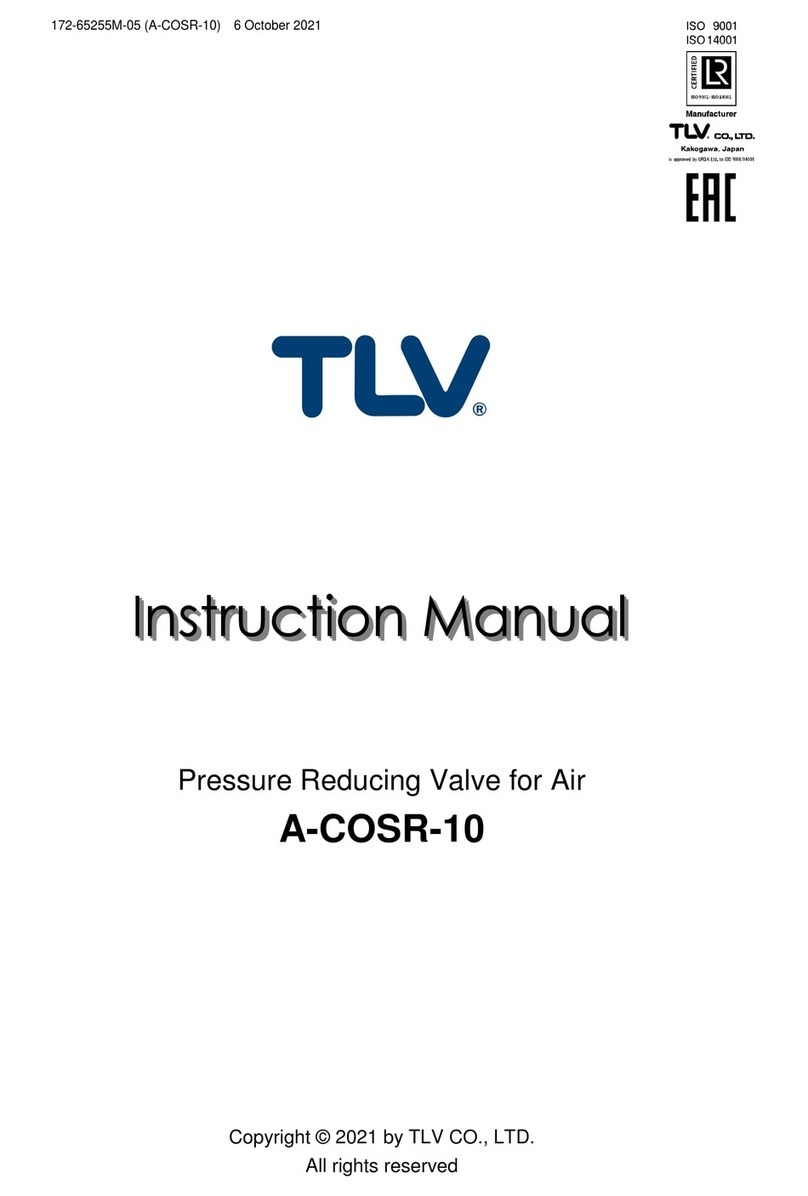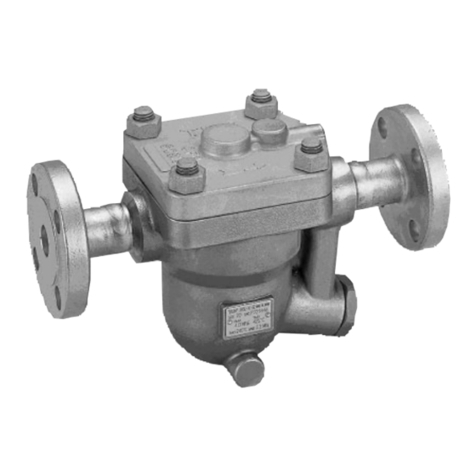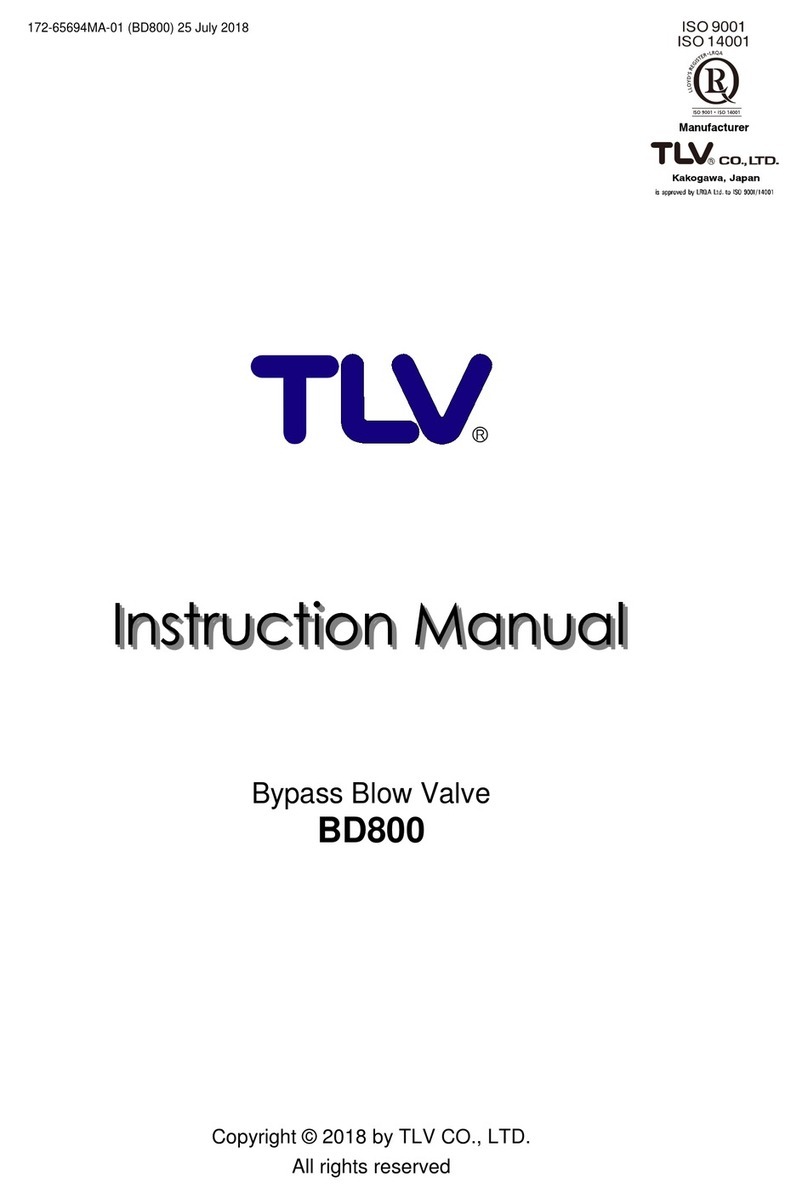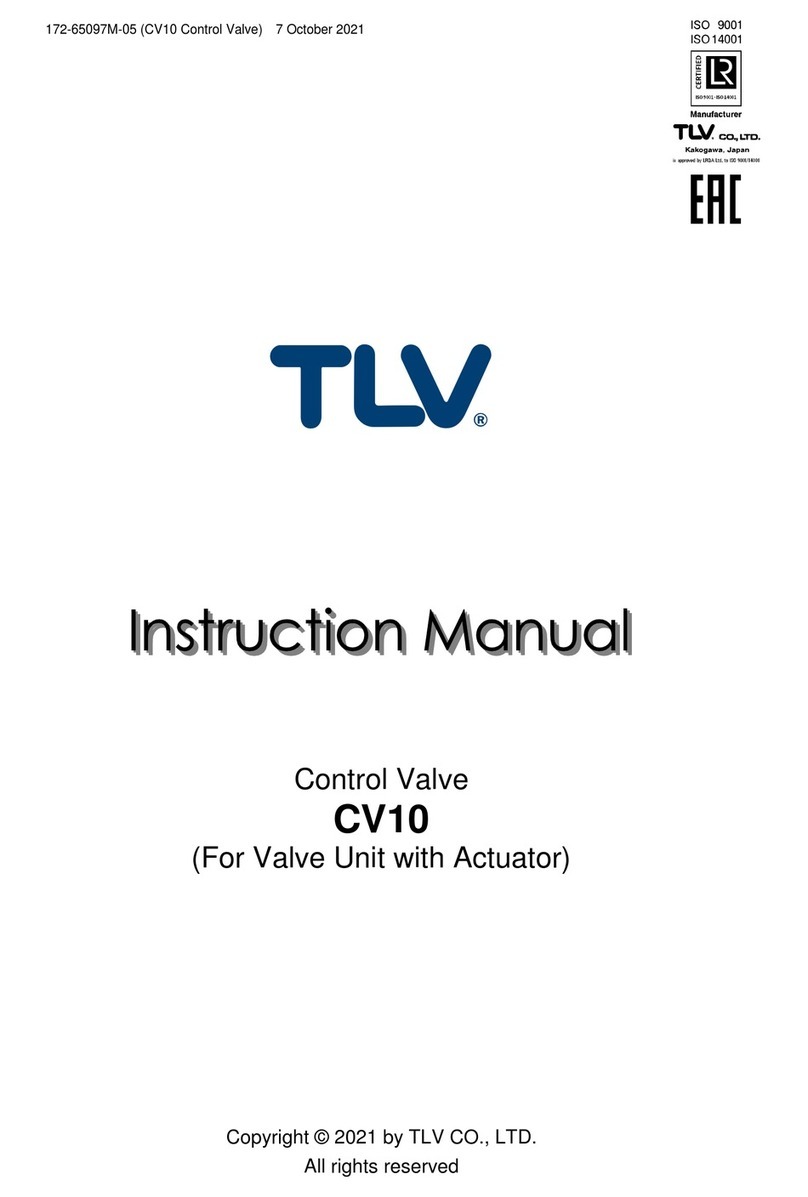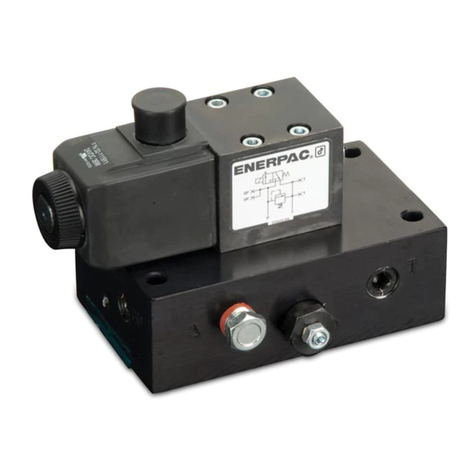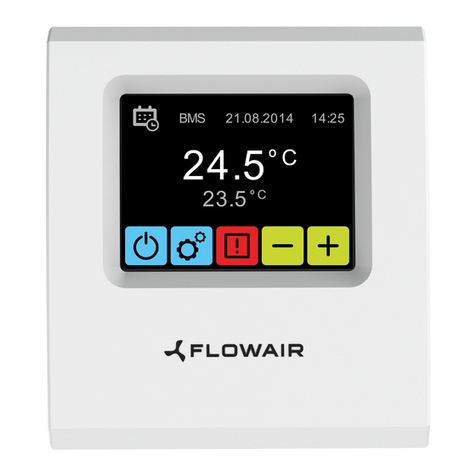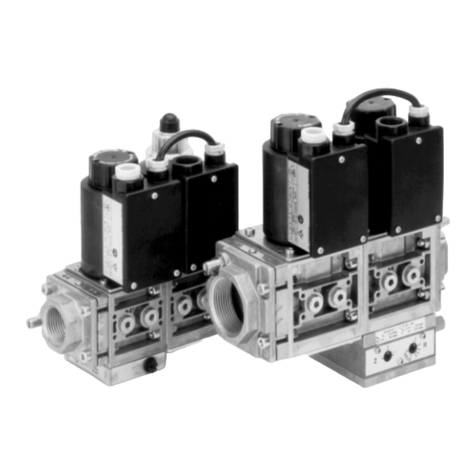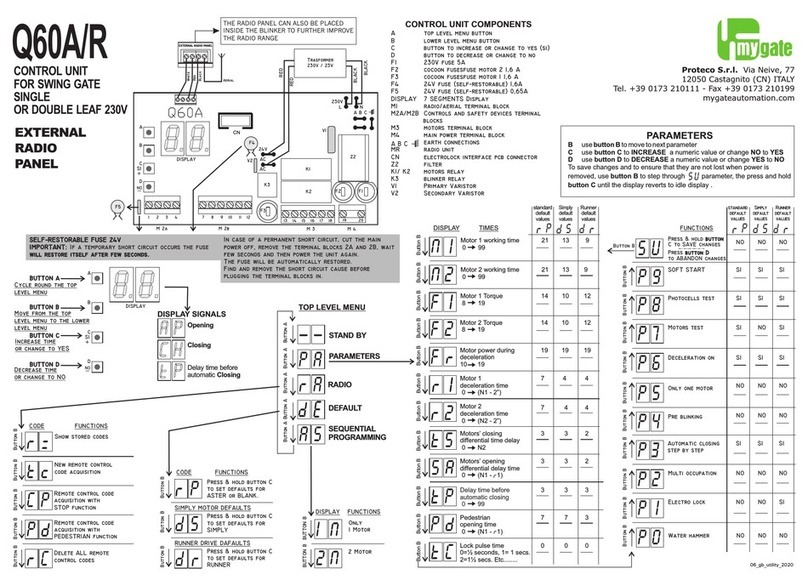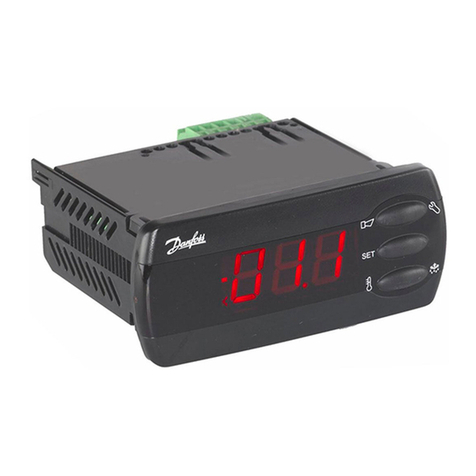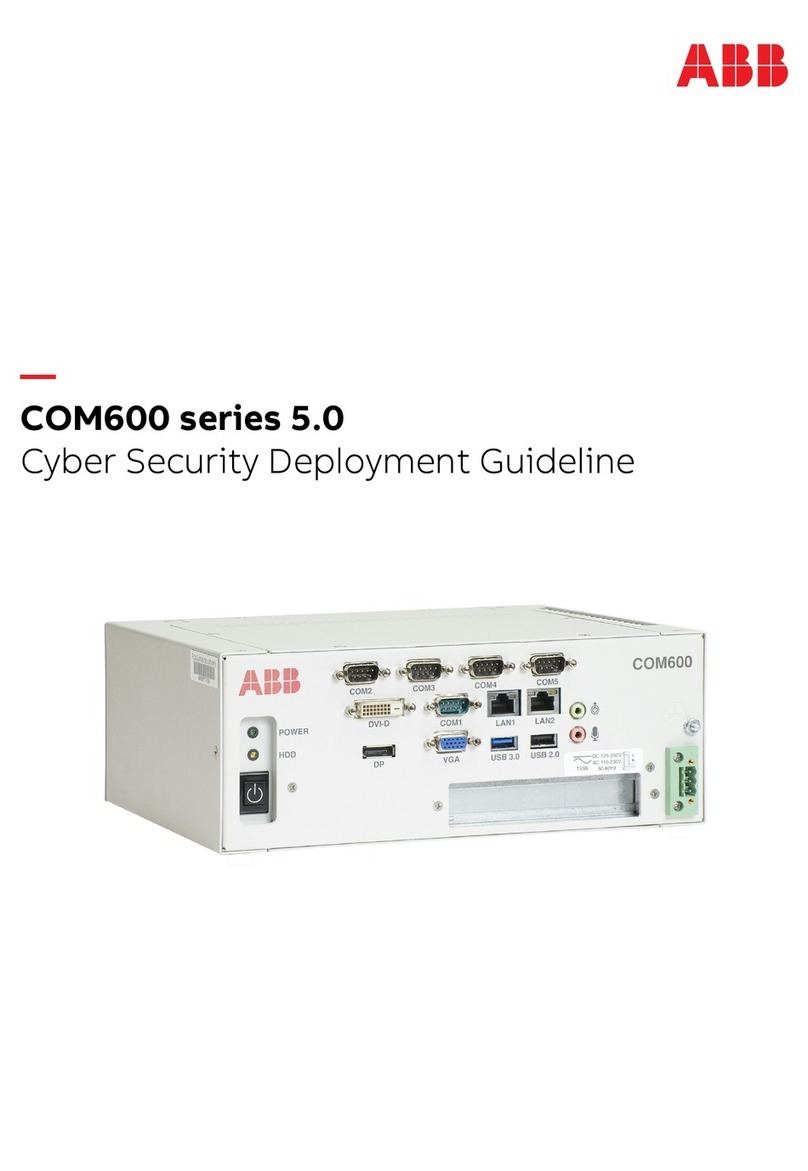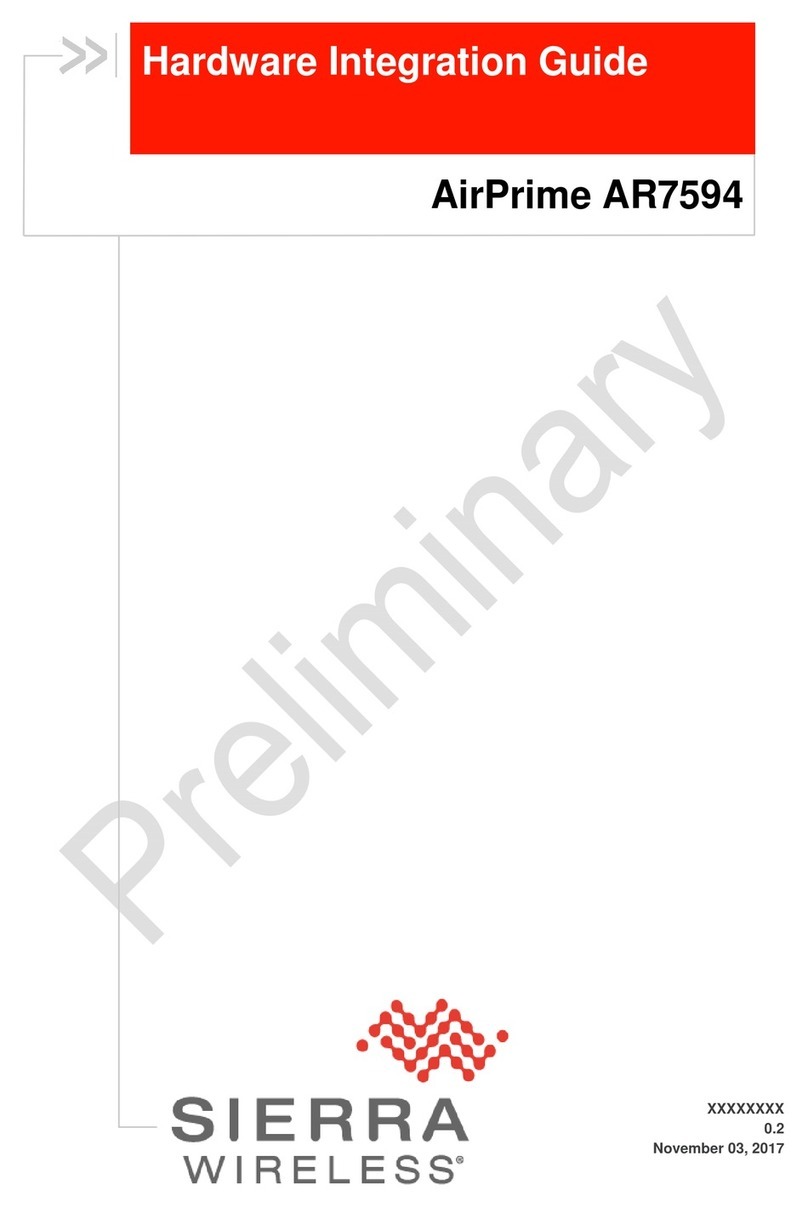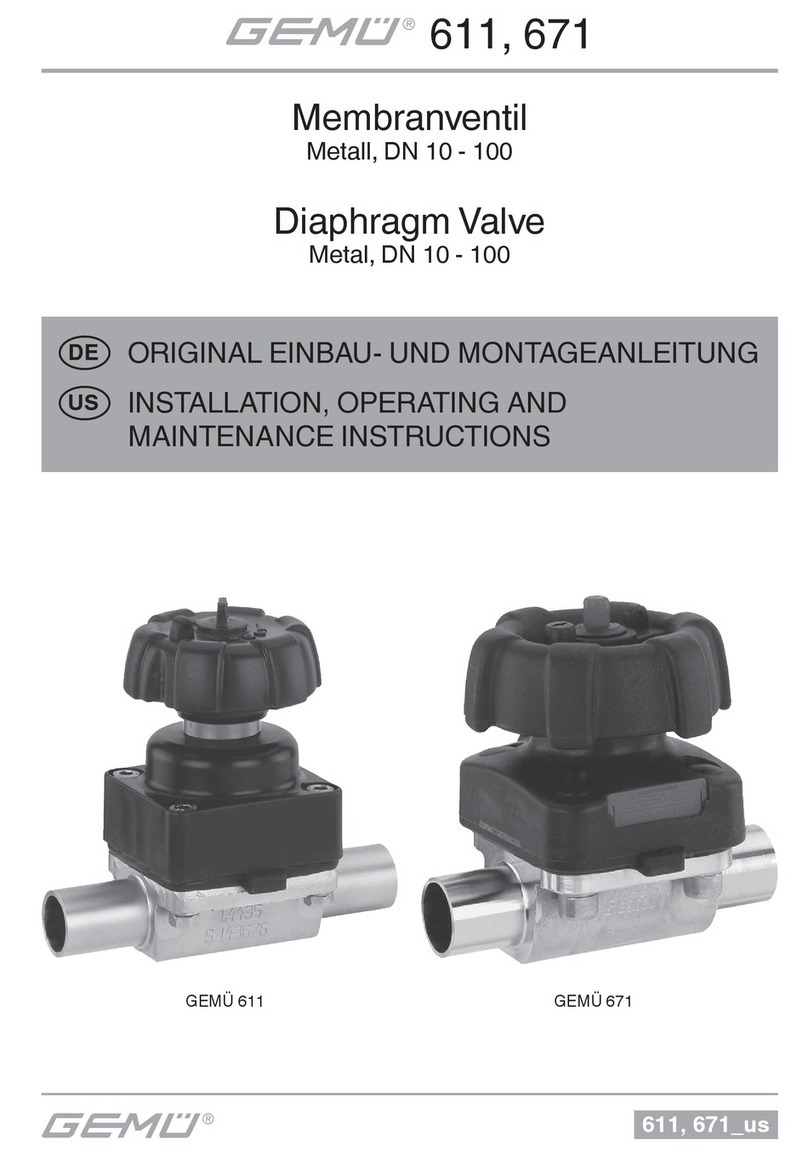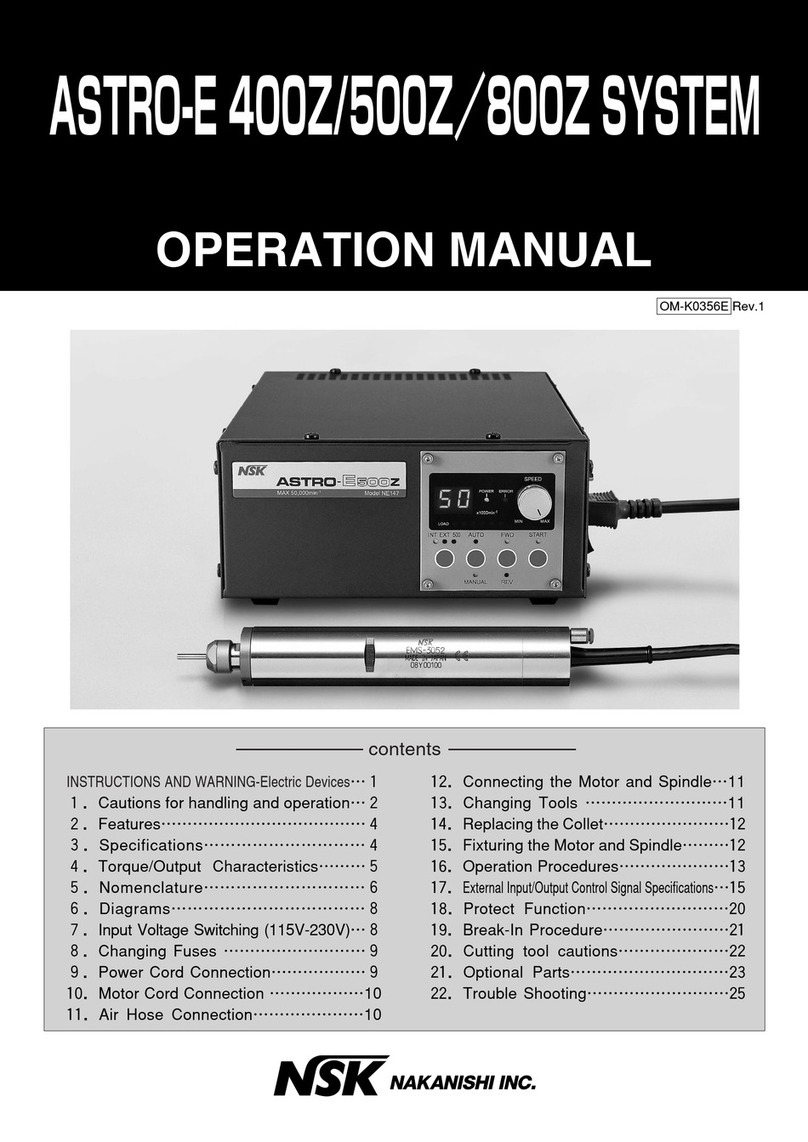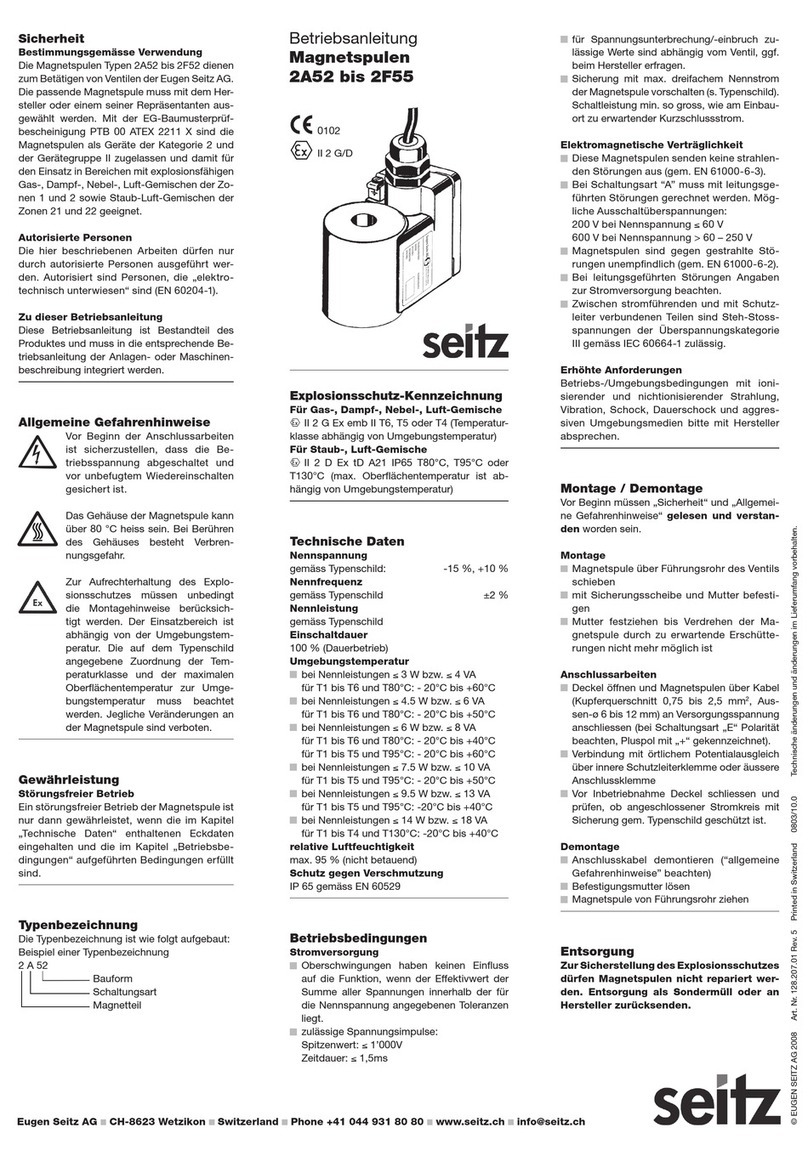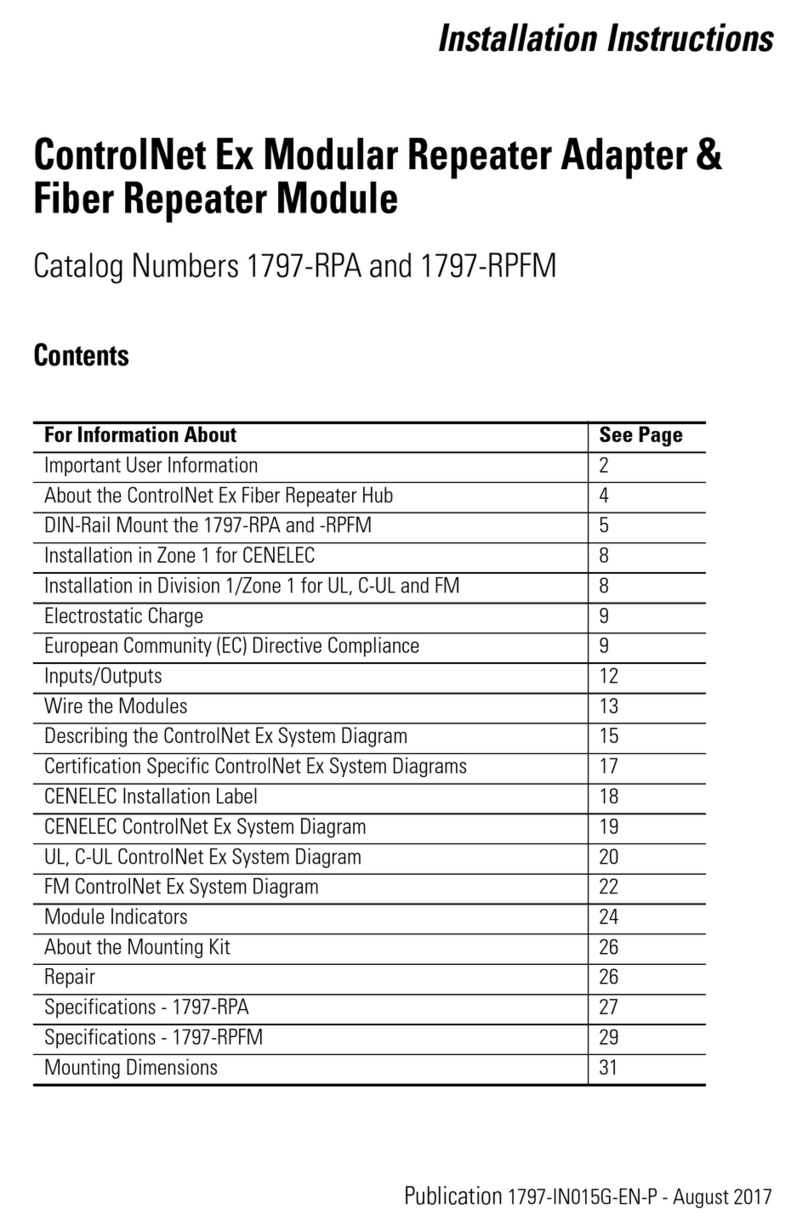TLV S-COS-16 User manual

Manufacturer
Kakogawa, Japan
is approved by LRQA Ltd. to ISO 9001/14001
ISO 9001
ISO14001
Instruction Manual
Pressure Reducing Valve for Steam
Featured Models: S-COS-16/S-COSR-16
172-65260M-09
Publication date 25 July 2023
Copyright © 2023 TLV CO., LTD.

Table of Contents
Introduction ............................................................................................................................... 3
Safety Considerations .............................................................................................................. 4
Specifications ........................................................................................................................... 6
Acceptable Operating Range ................................................................................................... 7
Correct usage of the product .................................................................................................... 8
Configuration .......................................................................................................................... 11
Installation .............................................................................................................................. 12
Adjustment .............................................................................................................................. 15
Maintenance ........................................................................................................................... 16
Disassembly ........................................................................................................................... 17
Troubleshooting ...................................................................................................................... 23
TLV EXPRESS LIMITED WARRANTY ................................................................................... 26
Service ................................................................................................................................... 28
2

Introduction
Thank you for purchasing the TLV S-COS/S-COSR pressure reducing valve for steam.
This product has been thoroughly inspected before being shipped from the factory. When
the product is delivered, before doing anything else, check the specifications and external
appearance to make sure nothing is out of the ordinary. Also be sure to read this manual
carefully before use and follow the instructions to be sure of using the product properly.
Steam-using equipment can achieve its intended efficiency only if the steam being used is
very dry. Using steam in which matter such as condensate, scale, types of grease or air is
entrained can result not only in problems with the steam-using equipment and in lowered
productivity, but can also lead to shortened service life for and malfunction of the pressure
reducing valves. The TLV S-COS, with a built-in separator and steam trap, eliminates these
problems and makes possible the supply of very dry steam at a constant pressure. Both
the TLV S-COS and S-COSR provide a more stable secondary pressure than conventional
pressure reducing valves. They are designed for long service life, with all major componets
made of stainless steel for superior durability.
If detailed instructions for special order specifications or options not contained in this manual
are required, please contact TLV for full details.
This instruction manual is intended for use with the model(s) listed on the front cover.
It is needed not only for installation, but also for subsequent maintenance, disassembly/
reassembly and troubleshooting. Please keep it in a safe place for future reference.
3

Safety Considerations
• Read this section carefully before use and be sure to follow the instructions.
• Installation, inspection, maintenance, repairs, disassembly, adjustment and valve opening/
closing should be carried out only by trained maintenance personnel.
• The precautions listed in this manual are designed to ensure safety and prevent equipment
damage and personal injury. For situations that may occur as a result of erroneous handling,
three different types of cautionary items are used to indicate the degree of urgency and the
scale of potential damage and danger: DANGER, WARNING and CAUTION.
• The three types of cautionary items above are very important for safety: be sure to observe
all of them as they relate to installation, use, maintenance and repair. Furthermore, TLV
accepts no responsibility for any accidents or damage occurring as a result of failure to
observe these precautions.
Cautionary items and definitions
Danger
Indicates an urgent situation which poses a threat of death or serious injury
Warning
Indicates that there is a potential threat of death or serious injury
Caution
Indicates that there is a possibility of injury or equipment/product damage
Safety considerations for the product
Warning
NEVER apply direct heat to the float. The float may explode due to increased internal pressure,
causing accidents leading to serious injury or damage to property and equipment.
Caution
Install properly and DO NOT use this product outside the recommended operating
pressure, temperature and other specification ranges. Improper use may result in such
hazards as damage to the product or malfunctions that may lead to serious accidents. Local
regulations may restrict the use of this product to below the conditions quoted.
Caution
DO NOT use the product in excess of the maximum operating pressure differential. Such
use could make discharge through the steam trap impossible (blocked).
Caution
Take measures to prevent people from coming into direct contact with product outlets.
Failure to do so may result in burns or other injury from the discharge of fluids.
Caution
When disassembling or removing the product, wait until the internal pressure equals
atmospheric pressure and the surface of the product has cooled to room temperature.
Disassembling or removing the product when it is hot or under pressure may lead to discharge of
fluids, causing burns, other injuries or damage.
4

Caution
Be sure to use only the recommended components when repairing the product, and NEVER
attempt to modify the product in any way. Failure to observe these precautions may result in
damage to the product and burns or other injury due to malfunction or the discharge of fluids.
Caution
Do not use excessive force when connecting threaded pipes to the product. Over-tightening
may cause breakage leading to fluid discharge, which may cause burns or other injury.
Caution
Use only under conditions in which no freeze-up will occur. Freezing may damage the
product, leading to fluid discharge, which may cause burns or other injury.
Caution
Use only under conditions in which no water hammer will occur. The impact of water hammer
may damage the product, leading to fluid discharge, which may cause burns or other injury.
5

Specifications
Caution
Install properly and DO NOT use this product outside the recommended operating
pressure, temperature and other specification ranges. Improper use may result in such
hazards as damage to the product or malfunctions that may lead to serious accidents. Local
regulations may restrict the use of this product to below the conditions quoted.
DO NOT use the product in excess of the maximum operating pressure differential. Such
use could make discharge through the steam trap impossible (blocked).
Use only under conditions in which no freeze-up will occur. Freezing may damage the
product, leading to fluid discharge, which may cause burns or other injury.
Refer to the product nameplate for detailed specifications.
A
D
E
C
B
G
F
A Model E Secondary Pressure Range
B Nominal Diameter F Valve No. 01
C Maximum Operating Temperature (TMO) G Production Lot No.
D Primary Pressure Range
01Valve No. is displayed for products with options. This item is omitted from the nameplate when there
are no options.
6

Acceptable Operating Range
Model S-COS-16, S-COSR-16
Primary pressure range 0.2 to 1.6 MPaG
Adjustable pressure range (all conditions must
be met) Within 10 to 84% of the primary pressure
Minimum adjustable pressure of 0.03 MPaG
Pressure differential between 0.07 to 0.8 MPa
Maximum adjustable flow rate 10% of rated flow rate
7

Correct usage of the product
Caution
Install properly and DO NOT use this product outside the recommended operating
pressure, temperature and other specification ranges. Improper use may result in such
hazards as damage to the product or malfunctions that may lead to serious accidents. Local
regulations may restrict the use of this product to below the conditions quoted.
1. The product should be operated only within its specifications.
2. Installing an ON/OFF valve (solenoid valve or motorized valve)
Inlet side
Motorized or
Solenoid Valve
If an on-off valve, such as a motorized valve, is required to stop supply of steam to the
steam-using equipment, install it at the inlet side of the product. If a solenoid valve is
installed at the outlet of the product, its opening and closing will cause heavy chattering
and may lead to damage of the piston and main valve. (When the on-off valve opens,
the secondary pressure of the product changes from zero to the set pressure. Passing
through an area of the reducing ratio of less than 10:1, where adjustment is impossible,
chattering occurs momentarily.) To save energy, it is recommended to install the on-off
valve as near to the boiler as possible.
Note
To prevent water hammer, it is recommended that a slow-acting motorized on-off valve be
used. If a fast-acting on-off solenoid valve is used for frequent temperature control, the
potential water hammer effect can damage the steam-using equipment and the product.
3. Installing a control valve and a safety valve
Steam-using
Equipment
Safety
Valve
Control
Valve
Steam-using
Equipment
A control valve (i.e. for temperature control) installed between the product and the
steam-using equipment (downstream of the product) may raise the pressure between
the product and the control valve when the control valve is closed, depending on their
proximity. Therefore, the control valve should be installed closed to the steam-using
equipment. Also, a safety valve should be installed downstream of the control valve.
Note
When installing a safety valve to protect the steam-using equipment, be sure to install it on
the steam-using equipment or directly before the inlet of the steam-using equipment. If the
safety valve is installed between the product and a control valve, an eventual pressure rise
could activate the safety valve.
8

Recommended straight pipe runs
If the product is installed either directly before or after an elbow or control valve, unevenness
in flow may result in chattering and unstable pressure. To ensure stable steam flow, it is
recommended that the product be installed on straight runs of piping, as illustrated below. (d =
pipe diameter)
1. Inlet (primary) side
• Maintain a straight piping run of 10 d or more (L) when a manual valve, a strainer or an
elbow, etc. is installed. (Example: if nominal size is 25 mm, have 250 mm or more)
L
• Maintain a straight piping run of 30 d or more (L) when an automated valve (on-off
valve) is installed. (Example: if nominal size is 25 mm, have 750 mm or more)
L
2. Outlet (secondary) side
•Maintain a straight piping run of 15 d or more (L) when a manual valve, a strainer or an
elbow, etc. is installed. (Example: if nominal size is 25 mm, have 375 mm or more)
L
• Maintain a straight piping run of 30 d or more (L) when a safety valve is installed.
(Example: if nominal size is 25 mm, have 750 mm or more)
L
• Maintain a straight piping run of 30 d or more (L) when another pressure reducing valve
is installed. (Two-stage pressure reduction) (Example: if nominal size is 25 mm, have
750 mm or more)
L
9

• Maintain a straight piping run of 30 d or more (L) when a control valve or an automated
valve (on-off valve) is installed. (Example: if nominal size is 25 mm, have 750 mm or
more)
L
10

Configuration
S-COS-16 S-COSR-16
⑬
③
⑥
⑤
①
⑱
⑭
⑧
⑳
⑩
⑪
⑫
②
⑰
⑯
⑮
⑲
⑦
④
⑨
⑮
⑩
⑭
⑨
⑲
⑦
⑥
⑤
④
⑰
⑱
⑪
⑫
⑬
⑯
③
①
②
⑧
No. Part Name
1 Main Body
2 Trap Body
3 Trap Cover
4 Separator
5 Float
6 Float Cover
7 Trap Valve Seat
8 Separator Screen
9 Main Valve Seat
10 Main Valve
11 Piston
12 Cylinder
13 Pilot Screen
14 Pilot Screen Holder
15 Pilot Body
16 Pilot Valve Stem & Valve
17 Pilot Valve Seat
18 Diaphragm
19 Diaphragm Support
20 Spring Housing
21 Coil Spring
22 Adjustment Screw
23 Adjustment Handle
24 Plug
No. Part Name
1 Main Body
2 Cover Plug
3 Screen
4 Main Valve Seat
5 Main Valve
6 Piston
7 Cylinder
8 Pilot Body
9 Pilot Valve Stem
10 Pilot Valve Seat
11 Diaphragm
12 Pilot Screen
13 Pilot Screen Holder
14 Diaphragm Support
15 Coil Spring
16 Spring Housing
17 Adjustment Screw
18 Adjustment Handle
19 Plug
11

Installation
Caution
Install properly and DO NOT use this product outside the recommended operating
pressure, temperature and other specification ranges. Improper use may result in such
hazards as damage to the product or malfunctions that may lead to serious accidents. Local
regulations may restrict the use of this product to below the conditions quoted.
Take measures to prevent people from coming into direct contact with product outlets.
Failure to do so may result in burns or other injury from the discharge of fluids.
Installation, inspection, maintenance, repairs, disassembly, adjustment and valve opening/
closing should be carried out only by trained maintenance personnel.
1. Blowdown
Before installing the product, be sure to blow down all piping thoroughly. If this is not
possible, perform a blowdown using the bypass valve.
Blowdown is especially important for newly installed piping or after the system has
been shut down for a long period of time. This will reduce operation failure caused by
condensate or foreign matter.
Open
Closed Closed
2. Removing protective caps and seals
Before installation, be sure to remove all protective seals and caps. (Found in 3 (S-COS)
or 2 (S-COSR) locations, on the product inlet and outlet(s).)
S-COS S-COSR
3. Installation angle
Install the product vertically, so that the arrow mark on the body points horizontally in the
direction of flow.
Allowable inclination is 10 degrees in the fore-aft direction and 15 degrees in the plane
perpendicular to the flow line.
15°15°
10°
10°
12

4. Piping support
Install the product, paying attention to avoid excessive load, bending and vibration.
Support the inlet and outlet pipes securely.
S-COS S-COSR
5. Maintenance space
Leave sufficient space for maintenance, inspection and repair.
6. Trap outlet pipe
For ease of maintenance, installation of a union connection is recommended for the trap
outlet pipe.
Connect the outlet pipe to a condensate return line, or extend it to a trench. In the case
of the latter, make sure the end of the pipe is above the waterline. (Dirt and water may be
sucked up by the vacuum formed during trap closure and system shutdown.)
7. Blowdown valve (requires optional plug)
In an environment of heavy dirt or scale, or when the steam-using equipment is used only
periodically, such as for room heating equipment, be sure to use a blowdown valve.
1. Remove the plug from the main body.
2. Install the blowdown valve.
3. Open the blowdown valve and blow any residual dirt and scale off of the screen.
4. Periodically activate the blowdown valve to keep the system free of dirt and scale.
8. Piping size/diffuser
If it is expected that the secondary steam flow velocity will be more than 30 m/s (100 ft/s),
install a diffuser in order to keep the flow velocity below 30 m/s (100 ft/s). If the distance
13

between the product and the steam-using equipment is great, a possible drop in pressure
should be taken into consideration when selecting the piping size.
In addition, when installing the strainer, the strainer screen should be either at the 3
o’clock or 9 o’clock position to prevent condensate accumulation.
a b
Diffuser
Straight piping (d = pipe diameter)
a 10 d or longer upstream
b 15 d or longer downstream
9. Two-stage pressure reduction
Two-stage pressure reduction should be performed whenever the pressure cannot be
reduced to the desired level with a single unit due to operating range limitations, such as
when the reduction ratio is greater than 10:1.
Bypass
Valve
Bypass
Valve
Pressure
Gauge
Pressure
Gauge
Pressure
Gauge
Outlet
Shut-off
Valve
Shut-off
Valve
Shut-off
Valve
Shut-off
Valve
Inlet
Safety Valve
(Relief Valve)
10. Accessories
Always install a shut-off valve, pressure gauge and bypass line at both inlet and outlet.
Ball valves, which will not retain condensate, are recommended for inlet and outlet shut-off
valves. The bypass pipe should be at least 1/2of the size of the inlet (primary side) pipe.
A strainer should always be installed ahead of the product has a built-in strainer, however
in case an external strainer is installed, it should be installed ahead of the product and
the strainer should be installed horizontally with the basket at the 3 or 9 o’clock position in
order to prevent condensate accumulation.
Pressure
Gauge
Pressure
Gauge
Globe
Valve
Ball ValveBall Valve
Safety Valve
(Relief Valve)
14

Adjustment
The product should be properly adjusted for protection of the steam-using equipment against
water hammer.
1. It is necessary to blow down all pipe lines thoroughly. The blowdown is especially
important if the line is new or has been shut down for a long period of time.
Take particular care to ensure that matter such as condensate and dirt does not remain
inside the steam-using equipment. (Stay clear of any pressurized blow-out from the safety
valve.)
2. Make sure that the shutoff valve and the bypass valve located upstream and downstream
of the product are completely closed.
3. Remove the spanner cap, loosen the locknut and turn the adjustment screw
counterclockwise to reduce tension on the coil spring.
Loosen the locknut, then turn the adjustment handle counter-clockwise to free the coil
spring.
Loosen the locknut
Counterclockwise
Fully raise the adjustment screw
4. Slowly, fully open the shutoff valve at the inlet of the product.
Allow sufficient time for condensate remaining at the inlet of the product to be discharged.
5. Slightly open the shutoff valve at the outlet of the product.
6. Turn the adjustment screw clockwise until the desired outlet pressure is obtained. Wait
several minutes.
Clockwise
Clockwise to increase pressure
Counterclockwise
Counter-clockwise to decrease pressure
7. Slowly, fully open the shutoff valve at the outlet of the product.
8. After setup, tighten the locknut.
9. When shutting down the system, always close the outlet shutoff valve first and then the
inlet valve.
15

Maintenance
Caution
Take measures to prevent people from coming into direct contact with product outlets.
Failure to do so may result in burns or other injury from the discharge of fluids.
Be sure to use only the recommended components when repairing the product, and NEVER
attempt to modify the product in any way. Failure to observe these precautions may result in
damage to the product and burns or other injury due to malfunction or the discharge of fluids.
Operational check
To ensure long service life of the product, the following inspection and maintenance should be
performed regularly.
Part Name Inspection and Maintenance Frequency
Screens (Separator and
Pilot) Disassemble and clean annually.
If there is substantial blockage, install a strainer (approximately 60
mesh) ahead of the product.
Main Valve, Main Valve
Seat, Pilot Valve and Pilot
Valve Seat
Replace after approximately 15,000 hours.
If there is chattering or dirt, premature wear may result.
Piston Ring Replace after approximately 8,000 hours.
If there is chattering or if scale build-up is severe, premature wear
may result.
Piston Replace after approximately 30,000 hours.
If hunting or chattering takes place, premature wear may result.
Trap Valve Seat
(For S-COS only) Replace after approximately 40,000 hours.
If scale build-up is severe, blockage may occur in a short period of
time.
Diaphragm Replace after approximately 30,000 hours.
If hunting or chattering takes place, cracks or fatigue may develop in a
short period of time.
16

Disassembly
Warning
NEVER apply direct heat to the float. The float may explode due to increased internal pressure,
causing accidents leading to serious injury or damage to property and equipment.
Caution
When disassembling or removing the product, wait until the internal pressure equals
atmospheric pressure and the surface of the product has cooled to room temperature.
Disassembling or removing the product when it is hot or under pressure may lead to discharge of
fluids, causing burns, other injuries or damage.
It is a recommended practice to dismantle and inspect the product once a year for preventive
maintenance purposes. It is especially important to perform an inspection immediately after
the initial run of a new line or before or after equipment that is out of service for a long period
of time.
(Installation, inspection, maintenance, repairs, disassembly, adjustment and valve opening/
closing should be carried out only by trained maintenance personnel.)
Remove all steam from the piping (both upstream and downstream). If the steam supply to the
system cannot be shut off, change over to bypass operation. Close shut-off valves at the inlet
and outlet of the product completely. Relieve residual steam pressure by loosening slightly the
spring housing hex bolt and screen holder or plug. Wait for the body to cool before attempting
to remove the product from the line. Then remove inlet and outlet flange retaining bolts and
nuts to permit removal of the product. Secure the product in a vise to perform the inspection.
Disassembling the adjustment section
Loosen the adjustment screw completely and remove the bolts from the spring housing. Grasp
the mounting plate and lift the spring housing straight up and off. Having removed the spring
housing, you will see the diaphragm support, coil spring, bearing and spring retainer.
Important
Check for seizure or any damaged screw threads.
Adjustment Screw
Nameplate
Ball
Spring Guide
Coil Spring
Diaphragm Support
Locknut
Bolt
17

Disassembling the pilot section
The diaphragm is removed by using the notch in the pilot body. Loosen and remove the pilot
valve seat with a box wrench. Lift the pilot valve spring up and out with a pair of tweezers.
Then loosen and remove the screen holder to remove the pilot screen.
Important
Check for any fault on the seat of the pilot valve and the pilot valve seat, flaws on the gaskets,
and clogging of the screen. Check for deformation, corrosion or faults on the diaphragm. The
diaphragm should be convex (open downward), with the printed UP mark on the top.
Diaphragm
Pilot Valve Seat & Gasket
Pilot Valve Stem
Pilot Valve
Pilot Valve Spring
Connecting Tube
Nut
Pilot Screen
Pilot Screen Holder & Gasket
Pilot Body
Notch
Upper Pilot Body Gasket
Disassembling the piston section
Remove the pilot body after loosening and removing the bolts (stud bolts). During this process,
pay attention not to lose the connecting tubes (2 pieces).
Remove the piston and the cylinder from the main body. Then remove the piston rings and the
tension rings from the piston. Do not apply too much force when removing the piston rings and
tension rings.
Important
Check for the interior of the cylinder, the exterior of the piston rings, the small hole on the piston
and the gaskets for any fault or abnormality.
Piston
Stud Bolt
Piston Ring
Piston Ring
Tension Ring
Tension Ring
Cylinder & Gasket
Lower Pilot Body Gasket
Connecting Tube
18

Disassembling the separator and main valve section
Turn the product upside down for easy dismantling of the separator and main valve. Loosen
the hex bolts and remove the trap body. Be careful, as the separator may drop off when the
product is returned to the normal attitude.
Removal of the separator and pressed-in sleeve permits removal of the main valve coil spring,
the main valve, main valve holder and screen. Loosen the valve seat with a box wrench and
remove it from the body.
Important
Check for damage on the seating and sliding surfaces of the main valve and main valve holder, the
seating surface of the valve seat, the gaskets, and for clogging of the screen.
At start-up following shut-down for a long period, always blow down the piston section of the body
through the plug (if an optional plug is supplied).
Corrugated Spring Washer
Plug (Option)
Separator Screen
Sleeve
Separator
Main Valve Seat & Gasket
Main Valve
Main Valve Spring
Main Body
Trap Body Gasket
Trap Body
Bolt
Disassembling the steam trap section
Loosen the bolts and remove the trap cover. Be careful, as hot condensate may splash out.
Remove the bolt from the float cover to reveal the float. Remove the float, then loosen the
valve seat with a box wrench and remove it.
Important
Check to determine that there is no deformation of the float, abnormality in the trap valve seat or
dirt accumulation in the trap cover.
Float Cover
Trap Cover
Float
Trap Valve Seat & Gasket Trap Cover Gasket
Guide Pin Guide Pin
Bolt
19

Disassembling the main valve and cover plug/cover section
Turn the product upside down for easy dismantling of the main valve.
Loosen and remove the cover plug. Removal of the cover plug and pressed-in sleeve permits
the removal of the main valve, main valve spring and the screen. Loosen the main valve seat
with a box wrench and remove it from the main body.
Important
Check for damage on the seating and sliding surfaces of the main valve and main valve holder,
the seating surface of the main valve seat, and for damage on the gaskets. At start-up following
shut-down for a long period, always blow down the piston section of the body through the plug
(option).
Screen
Main Valve Seat & Gasket
Main Valve
Main Valve Spring
Main Body
Cover Plug Gasket
Cover Plug
Sleeve
Plug (Option)
20
Other manuals for S-COS-16
1
This manual suits for next models
1
Table of contents
Other TLV Control Unit manuals
Popular Control Unit manuals by other brands
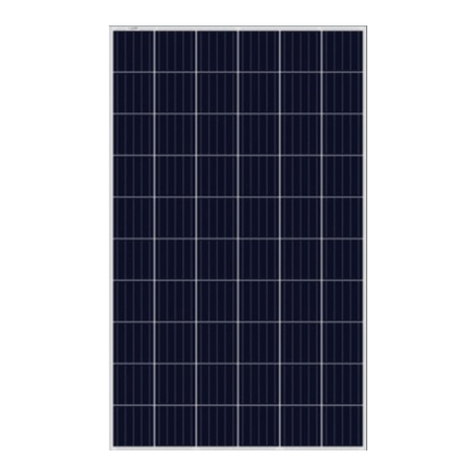
Sharp
Sharp ND-AK270 installation manual
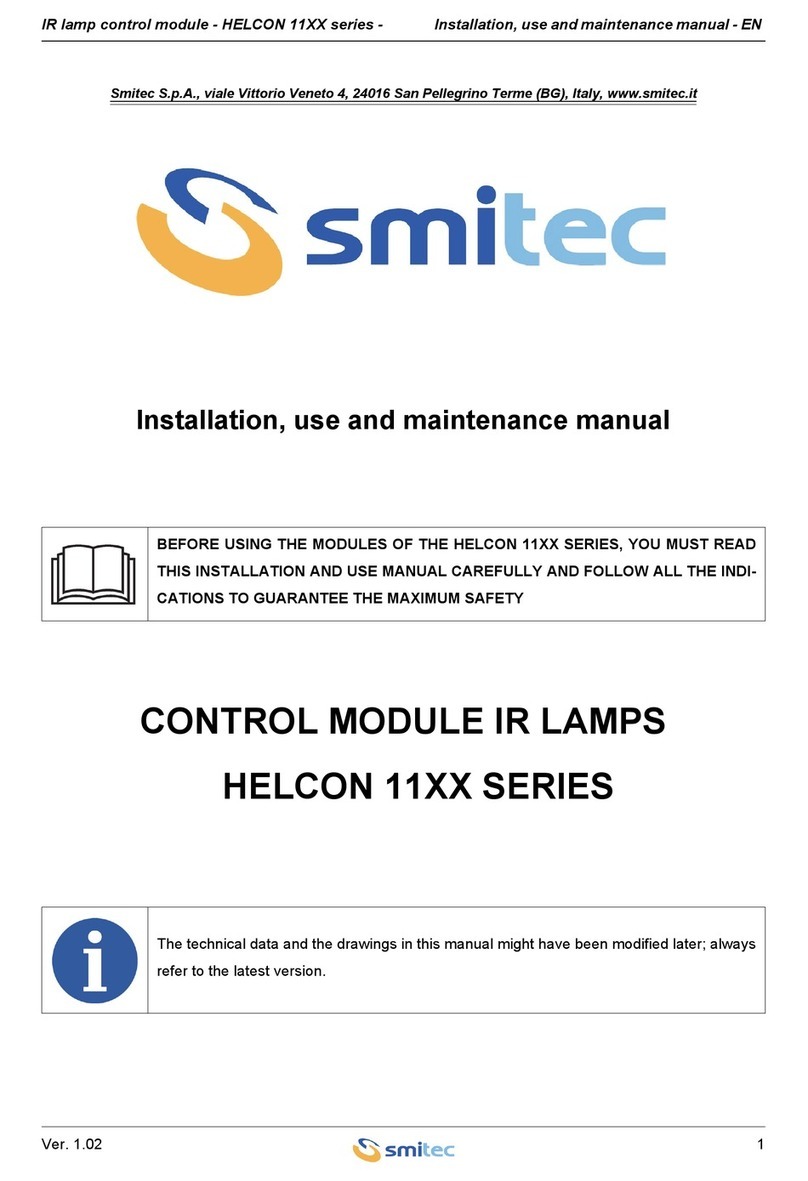
Smitec
Smitec HELCON 10 Series Installation, use & maintenance manual
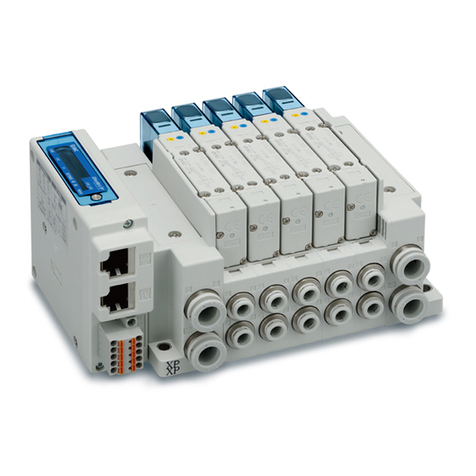
SMC Networks
SMC Networks EX260-SEN2-X205 Operation manual

Heritage Bathrooms
Heritage Bathrooms SDC04 Installation instructions and user guide
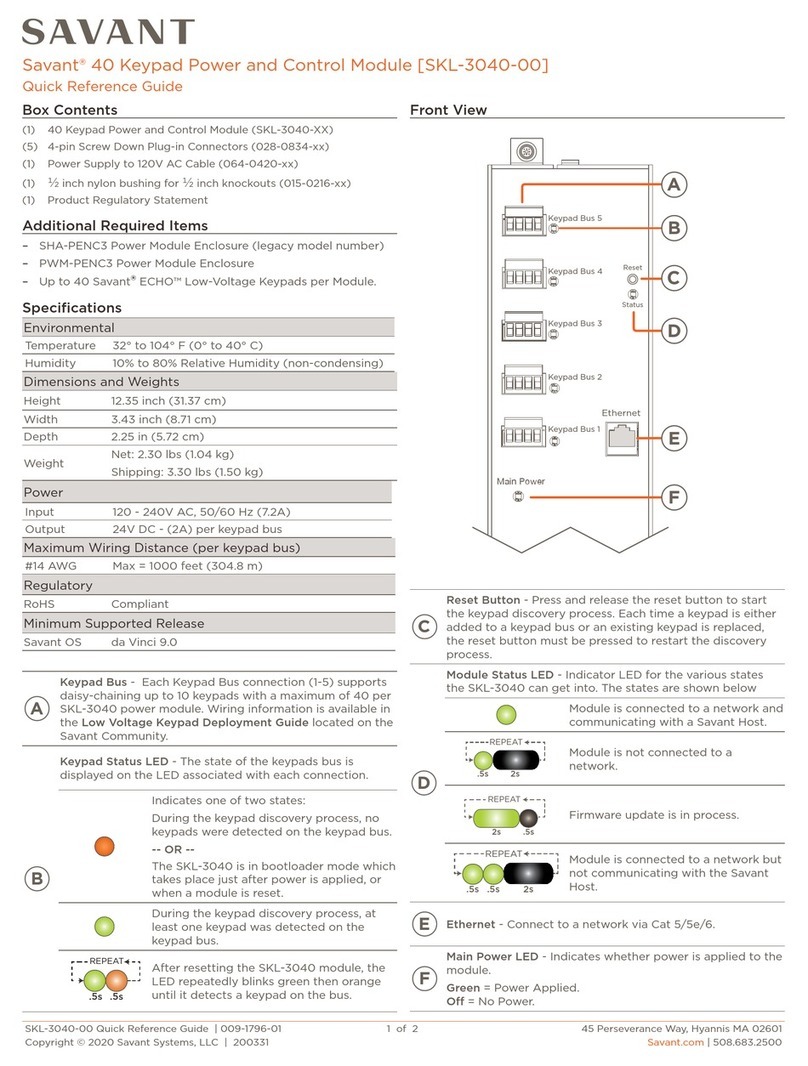
Savant
Savant SKL-3040-00 Quick reference guide
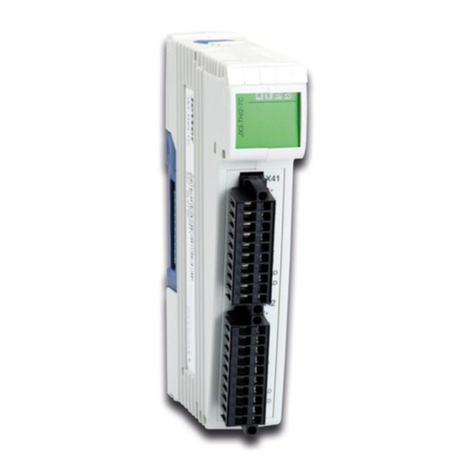
Jetter
Jetter JX3-THI2-TC user manual

